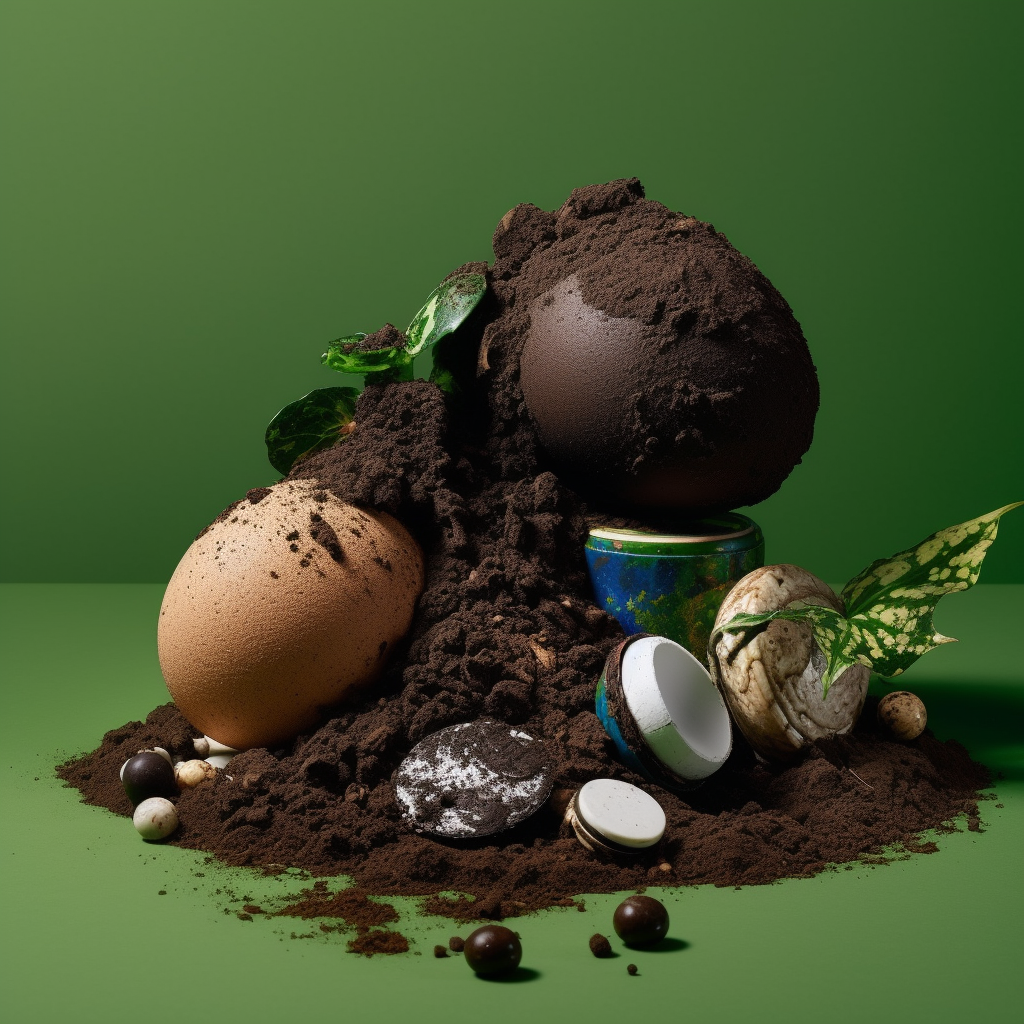
In an era where sustainability is increasingly prioritized, composting beauty waste presents an innovative opportunity to reduce our environmental impact while contributing to a healthier planet. This guide will provide an overview of the basics of composting and the numerous benefits it offers for both personal skincare and the environment. I will outline which beauty products are suitable for composting, detail a step-by-step process for effective composting, and address common issues that may arise. Additionally, I will explore alternative eco-friendly disposal options. By engaging with this guide, you can transform your beauty routine into a greener practice.
Key Takeaways:
What is Composting?
Composting is a natural process that transforms organic waste, including kitchen scraps and yard trimmings, into nutrient-rich soil amendment known as compost, which can be aided by tools like a compost caddy. By allowing microorganisms, worms, and other decomposers to break down this organic matter, I not only help reduce waste in landfills but also enrich the soil, promote biodiversity, and support a sustainable ecosystem.
In the beauty industry, incorporating composting into my routine can significantly mitigate the environmental impact of makeup and beauty products, addressing the broader beauty industry waste issues. This is particularly relevant with the rise of compostable beauty products designed to tackle the plastic waste issue.
Definition and Process
Composting is defined as the biological decomposition of organic materials into compost, a nutrient-rich product that enhances soil health.
To create effective compost, I must carefully balance several critical factors throughout the process.
- Aeration is essential, as it prevents the compost from becoming anaerobic, which can produce unpleasant odors. Regularly turning the pile helps facilitate proper oxygen flow.
- Moisture levels also play a vital role, necessitating a balance that supports microbial activity-if it’s too dry, decomposition slows down; if it’s too wet, it can lead to rot.
- Temperature is another key element influencing the speed at which compost matures; ideally, maintaining a range of 130 degreesF to 160 degreesF promotes rapid breakdown.
Interestingly, beauty waste, such as used tea bags, expired cosmetics, and organic skincare products, can be seamlessly integrated into this process, alongside compostable beauty products like biodegradable makeup sponge and natural konjac fiber. These items contribute valuable nutrients and fibers while actively participating in eco-friendly beauty routines.
The Benefits of Composting Beauty Waste
Composting beauty waste provides significant environmental and personal benefits that support a more sustainable lifestyle while reducing cosmetic waste in landfills.
By embracing eco-friendly beauty practices, I can actively contribute to tackling the plastic waste issue and minimizing the environmental impact of makeup products, such as compostable sheet masks, biodegradable makeup sponges, and compostable under-eye patches from sustainable beauty brands.
Sustainable beauty brands like Well+Good, ESW Beauty, and Everist are setting an example by offering compostable packaging options and promoting cosmetic recycling programs, which further demonstrate their commitment to environmental sustainability practices.
Environmental and Personal Benefits
The environmental and personal benefits of composting beauty waste go beyond simple waste reduction; they play a significant role in promoting overall environmental sustainability practices.
By incorporating items such as biodegradable face wipes and natural konjac fiber into my beauty routine, I actively contribute to reducing the substantial waste generated by the beauty industry. These eco-friendly alternatives not only decompose naturally but also align with my commitment to a lifestyle focused on minimizing my carbon footprint.
As I embrace these sustainable choices, I enhance my green beauty regimen while fostering a sense of personal well-being, knowing that my skincare practices positively impact the planet. This holistic approach nurtures both my skin and the environment, transforming each beauty ritual into a meaningful contribution toward a cleaner, healthier world.
Types of Beauty Waste That Can Be Composted
Identifying the types of beauty waste that can be composted is essential for establishing an effective composting beauty routine and promoting sustainable practices within the beauty industry, including the reduction of microplastics and biodegradable plastics.
From compostable beauty products such as plant-based makeup wipes and biodegradable makeup sponges to organic cotton swabs and compostable packaging options, understanding which materials are suitable for composting can greatly minimize the environmental impact of personal care products.
Identifying Compostable Materials
Identifying compostable materials in my beauty routine is crucial for actively reducing waste and promoting sustainable practices.
By opting for products made from materials such as bamboo, natural fibers, or plant-based ingredients, like reusable makeup remover and plant-based makeup wipes, I can make informed choices that align with my eco-friendly values. For example, biodegradable makeup sponges decompose within months, unlike synthetic ones that linger in landfills for years. I may also consider compostable sheet masks crafted from organic cotton or cellulose, which nourish the skin while minimizing environmental impact.
To ensure the effectiveness of these choices, it’s important for me to look for certifications or labels indicating compostability. This guarantees that these items will break down naturally as intended, in contrast to conventional beauty products that often contain harmful plastics.
How to Compost Your Beauty Waste
Composting my beauty waste is a straightforward process when I follow a step-by-step guide designed to incorporate eco-friendly practices into my beauty routine.
To begin, I gather compostable beauty products, such as biodegradable face wipes and natural konjac fiber. I also utilize a compost caddy for the easy disposal of organic waste.
This approach allows me to contribute positively to the environment while minimizing waste generated by the beauty industry.
Step-by-Step Guide
My step-by-step guide for composting beauty waste begins with understanding the types of biodegradable materials that can be included in my compost system. This encompasses items such as used facial masks, empty hair product containers made from cardboard or paper, and leftover natural ingredients like fruit peels or coffee grounds.
By identifying these materials, I can make a conscious effort to set them aside instead of discarding them in the trash.
The next crucial step is to incorporate these items into my daily beauty routines by establishing a designated spot in my bathroom for compostable waste, such as a Simplehuman compost bin. For example, when using a banana peel in a hair mask, I can place the leftover peel directly into the compost bin after my treatment, promoting a more sustainable approach to both beauty and waste management.
Troubleshooting Common Composting Issues
I find that troubleshooting common composting issues is essential for maintaining a successful and efficient composting routine. Various factors can impede the decomposition process and impact the quality of the compost produced.
By recognizing the signs of problems such as odor, pests, or slow decomposition, I can optimize my composting practices. This not only enhances my compost quality but also contributes to broader environmental sustainability efforts.
Tips for Success
To achieve success in composting beauty waste, I find it essential to follow several effective tips that enhance the composting process while maintaining a clean beauty routine.
This journey begins with understanding the ideal balance of materials, ensuring a proper mix of green items like vegetable scraps and brown elements such as cardboard or paper. Maintaining this balance is crucial; too much of either can lead to unpleasant odors and slow decomposition.
I regularly aerate the compost pile to promote healthy microbial activity, which ensures a swift breakdown of organic matter. Using only biodegradable materials significantly impacts the efficiency of the process, underscoring the importance of checking labels before disposal.
Additionally, I contribute to a sustainable cycle by participating in cosmetic recycling programs that encourage the creative repurposing of containers and packaging, further reducing waste in landfills.
Alternative Options for Disposing of Beauty Waste
When composting isn’t feasible, I find it crucial to explore alternative options for disposing of beauty waste. This approach not only supports my commitment to an eco-friendly beauty routine but also promotes sustainable beauty brands.
Some viable alternatives include:
- Participating in cosmetic recycling programs
- Utilizing biodegradable packaging options
- Seeking out brands dedicated to reducing their environmental impact
By taking these steps, I can contribute to alleviating the plastic waste issue that is pervasive in the beauty industry, promoting brands like Neutrogena and Radius that focus on sustainable beauty items.
Other Sustainable Solutions
Exploring additional sustainable solutions alongside composting significantly enhances my commitment to eco-friendly beauty practices while effectively reducing overall beauty waste.
In today’s world, where environmental consciousness is of utmost importance, I recognize that both individuals and brands can adopt various strategies to minimize the ecological impact of beauty products.
For example, many companies now provide cosmetic recycling programs, which allow consumers like me to return empty containers for proper disposal. I find that embracing upcycling-transforming old or unused beauty items into new creations-not only serves as a creative outlet but also contributes to waste reduction.
Moreover, the shift towards sustainable beauty items, such as biodegradable packaging and refillable makeup from brands like ESW Beauty and Neutrogena, not only supports the environment but also reflects my growing awareness of our collective responsibility to preserve the planet for future generations.


